 Researchers have developed a micro-sized pipette probe for handling multiple liquids. It is the first time that such a small probe can dose fluid volume, and simultaneously control the concentration of particles inside the fluid.
Researchers have developed a micro-sized pipette probe for handling multiple liquids. It is the first time that such a small probe can dose fluid volume, and simultaneously control the concentration of particles inside the fluid.
Jun 4th, 2020
Read more
 One of nature's most important chemical reactions is now being captured in a breakthrough 'molecular movie'.
One of nature's most important chemical reactions is now being captured in a breakthrough 'molecular movie'.
Jun 4th, 2020
Read more
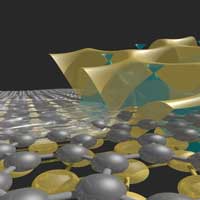 For the first time, it is possible to produce crystalline layers of precious metals that consist of a single atomic layer and which are semiconducting.
For the first time, it is possible to produce crystalline layers of precious metals that consist of a single atomic layer and which are semiconducting.
Jun 4th, 2020
Read more
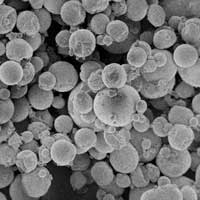 The sensor can stretch up to 80 times higher strain than strain gauges currently on the market and show resistance changes 100 times higher than the most sensitive materials in research development.
The sensor can stretch up to 80 times higher strain than strain gauges currently on the market and show resistance changes 100 times higher than the most sensitive materials in research development.
Jun 4th, 2020
Read more
 Single molecules captured on video at an unprecedented 1,600 frames per second.
Single molecules captured on video at an unprecedented 1,600 frames per second.
Jun 4th, 2020
Read more
 Scientists have made a dramatic breakthrough in the field of quantum science: a quantum microscope that records the flow of light, enabling the direct observation of light trapped inside a photonic crystal.
Scientists have made a dramatic breakthrough in the field of quantum science: a quantum microscope that records the flow of light, enabling the direct observation of light trapped inside a photonic crystal.
Jun 4th, 2020
Read more
 Researchers continue to push the boundaries of LED design a little further with a new method that could pave the way toward more efficient and versatile LED display and lighting technology.
Researchers continue to push the boundaries of LED design a little further with a new method that could pave the way toward more efficient and versatile LED display and lighting technology.
Jun 3rd, 2020
Read more
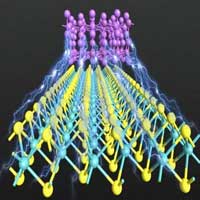 Researchers have discovered a new strategy to resolve the contact resistance problem in 2D semiconductors.
Researchers have discovered a new strategy to resolve the contact resistance problem in 2D semiconductors.
Jun 3rd, 2020
Read more
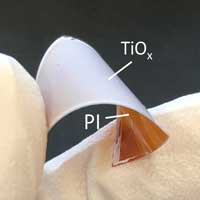 Researchers introduce a straightforward fabrication method that dramatically improves the gas sensing performance of a common ceramic.
Researchers introduce a straightforward fabrication method that dramatically improves the gas sensing performance of a common ceramic.
Jun 3rd, 2020
Read more
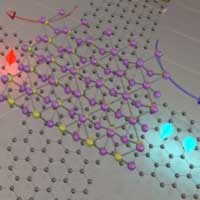 Researchers have published a new review on a field of computer device development known as spintronics, which could see graphene used as building block for next-generation electronics.
Researchers have published a new review on a field of computer device development known as spintronics, which could see graphene used as building block for next-generation electronics.
Jun 3rd, 2020
Read more
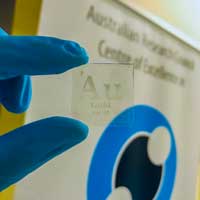 Applying a specific level of electric field is a shortcut to near-perfect alignment of the building blocks in vital technologies, including integrated chips and biosensing devices.
Applying a specific level of electric field is a shortcut to near-perfect alignment of the building blocks in vital technologies, including integrated chips and biosensing devices.
Jun 3rd, 2020
Read more
 Researchers have developed a smart nanosystem with enhanced curative efficacy and lower side effects than conevntional chemotherapy.
Researchers have developed a smart nanosystem with enhanced curative efficacy and lower side effects than conevntional chemotherapy.
Jun 3rd, 2020
Read more
 Researchers have developed a new easy-to-use smart optical film technology that allows smart window devices to autonomously switch between transparent and opaque states in response to the surrounding light conditions.
Researchers have developed a new easy-to-use smart optical film technology that allows smart window devices to autonomously switch between transparent and opaque states in response to the surrounding light conditions.
Jun 2nd, 2020
Read more
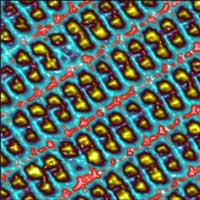 Researchers have discovered a single molecule switch that can act like a transistor and offers the potential to store binary information.
Researchers have discovered a single molecule switch that can act like a transistor and offers the potential to store binary information.
Jun 2nd, 2020
Read more
 By creating a new type of molecular circuit switch, the team may have just opened the door to ultra-high-density computing within our lifetime.
By creating a new type of molecular circuit switch, the team may have just opened the door to ultra-high-density computing within our lifetime.
Jun 2nd, 2020
Read more
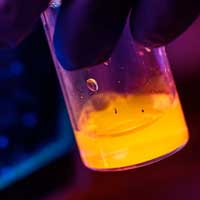 Scientists show boron nitride's promise for composites, biomedical applications.
Scientists show boron nitride's promise for composites, biomedical applications.
Jun 2nd, 2020
Read more
 Researchers have developed a micro-sized pipette probe for handling multiple liquids. It is the first time that such a small probe can dose fluid volume, and simultaneously control the concentration of particles inside the fluid.
Researchers have developed a micro-sized pipette probe for handling multiple liquids. It is the first time that such a small probe can dose fluid volume, and simultaneously control the concentration of particles inside the fluid.















 Subscribe to our Nanotechnology News feed
Subscribe to our Nanotechnology News feed